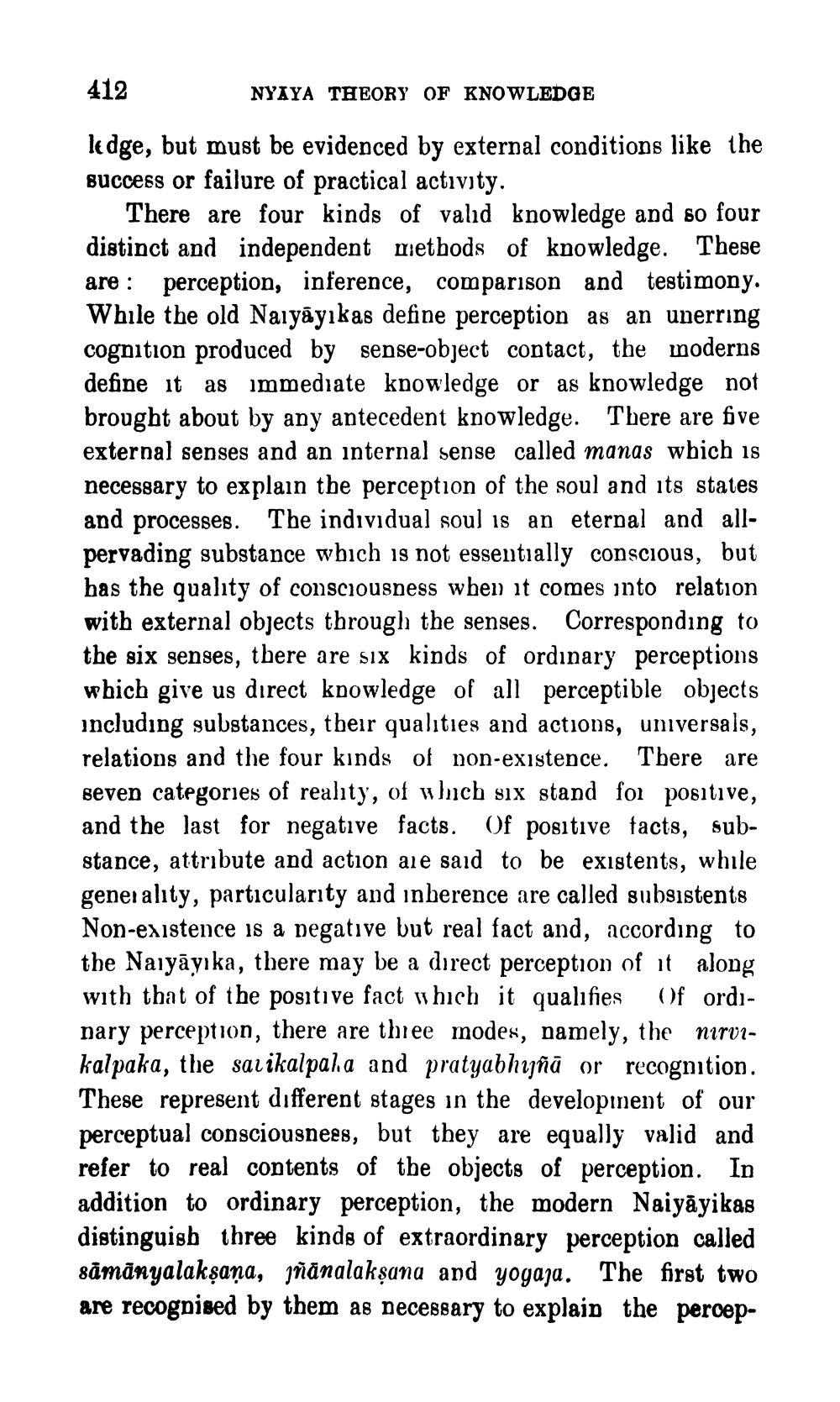________________
412
NYAYA THEORY OF KNOWLEDGE
ledge, but must be evidenced by external conditions like the success or failure of practical activity.
There are four kinds of vald knowledge and so four distinct and independent methods of knowledge. These are : perception, inference, comparison and testimony. While the old Naiyāyıkas define perception as an unerring cognition produced by sense-object contact, the moderns define it as immediate knowledge or as knowledge not brought about by any antecedent knowledge. There are five external senses and an internal sense called manas wbich is necessary to explain the perception of the soul and its states and processes. The individual soul is an eternal and allpervading substance which is not essentially conscious, but has the quality of consciousness when it comes into relation with external objects through the senses. Corresponding to the six senses, there are six kinds of ordinary perceptions which give us direct knowledge of all perceptible objects including substances, their qualities and actions, universals, relations and the four kinds of non-existence. Tbere are seven categories of reality, of which six stand foi positive, and the last for negative facts. Of positive tacts, substance, attribute and action are said to be existents, while generality, particularity and inherence are called subsistents Non-existence is a negative but real fact and, according to the Naiyāyıka, there may be a direct perception of it along with that of the positive fact which it qualifies Of ordinary perception, there are three modes, namely, the nirvikalpaka, the sazikalpala and pratyabhijñā or recognition. These represent different stages in the development of our perceptual consciousnees, but they are equally valid and refer to real contents of the objects of perception. In addition to ordinary perception, the modern Naiyāyikas distinguish three kinds of extraordinary perception called sāmānyalakşaņa, jñānalakṣana and yogaja. The first two are recognised by them as necessary to explain the peroep




